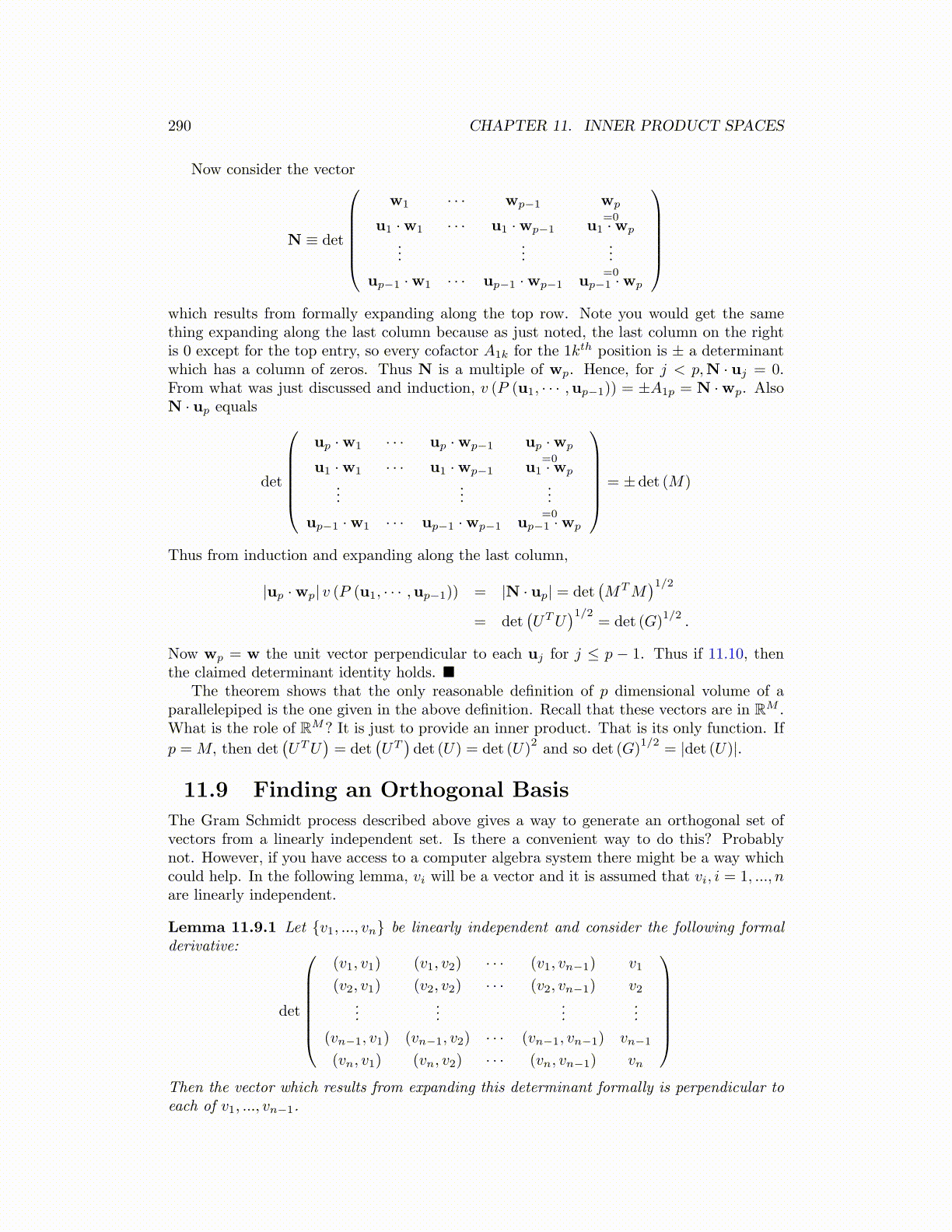
290 CHAPTER 11. INNER PRODUCT SPACES
Now consider the vector
N ≡ det
w1 · · · wp−1 wp
u1 ·w1 · · · u1 ·wp−1=0
u1 ·wp
......
...
up−1 ·w1 · · · up−1 ·wp−1=0
up−1 ·wp
which results from formally expanding along the top row. Note you would get the samething expanding along the last column because as just noted, the last column on the rightis 0 except for the top entry, so every cofactor A1k for the 1kth position is ± a determinantwhich has a column of zeros. Thus N is a multiple of wp. Hence, for j < p,N · uj = 0.From what was just discussed and induction, v (P (u1, · · · ,up−1)) = ±A1p = N ·wp. AlsoN · up equals
det
up ·w1 · · · up ·wp−1 up ·wp
u1 ·w1 · · · u1 ·wp−1=0
u1 ·wp
......
...
up−1 ·w1 · · · up−1 ·wp−1=0
up−1 ·wp
= ±det (M)
Thus from induction and expanding along the last column,
|up ·wp| v (P (u1, · · · ,up−1)) = |N · up| = det(MTM
)1/2= det
(UTU
)1/2= det (G)
1/2.
Now wp = w the unit vector perpendicular to each uj for j ≤ p − 1. Thus if 11.10, thenthe claimed determinant identity holds. ■
The theorem shows that the only reasonable definition of p dimensional volume of aparallelepiped is the one given in the above definition. Recall that these vectors are in RM .What is the role of RM? It is just to provide an inner product. That is its only function. If
p =M, then det(UTU
)= det
(UT)det (U) = det (U)
2and so det (G)
1/2= |det (U)|.
11.9 Finding an Orthogonal Basis
The Gram Schmidt process described above gives a way to generate an orthogonal set ofvectors from a linearly independent set. Is there a convenient way to do this? Probablynot. However, if you have access to a computer algebra system there might be a way whichcould help. In the following lemma, vi will be a vector and it is assumed that vi, i = 1, ..., nare linearly independent.
Lemma 11.9.1 Let {v1, ..., vn} be linearly independent and consider the following formalderivative:
det
(v1, v1) (v1, v2) · · · (v1, vn−1) v1
(v2, v1) (v2, v2) · · · (v2, vn−1) v2...
......
...
(vn−1, v1) (vn−1, v2) · · · (vn−1, vn−1) vn−1
(vn, v1) (vn, v2) · · · (vn, vn−1) vn
Then the vector which results from expanding this determinant formally is perpendicular toeach of v1, ..., vn−1.